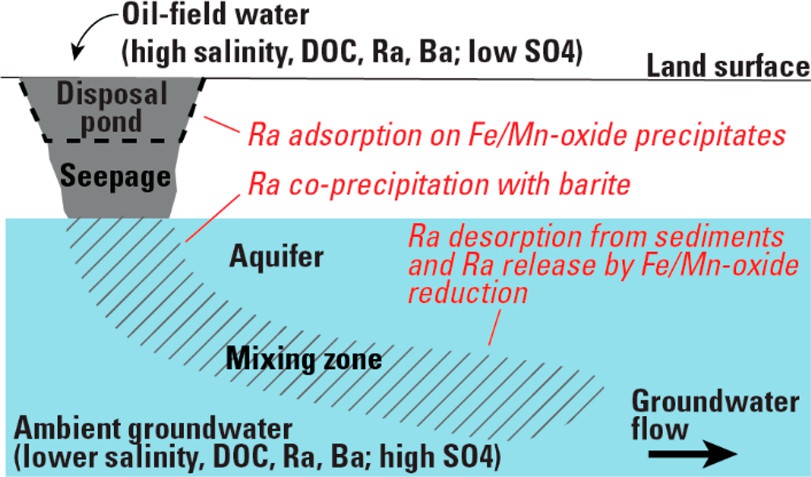California Oil, Gas, and Groundwater Program
The Case of Disappearing Radium—Why You Can’t Always Trace Chemicals in Oil-Field Water Along Flowpaths But Still See Effects in Groundwater
Summary of findings from McMahon and others, 2019
A detailed explanation of how these findings were arrived at is contained in the paper.
In the southwestern portion of the San Joaquin Valley, groundwater adjacent to the Lost Hills and North and South Belridge oil fields was sampled to determine whether and to what extent oil-field water and gas may have moved eastward from the oil field boundaries.
One key finding of that study is that radium in oil-field water disposed of in surface sump ponds disappears during seepage and then reappears at high concentrations in groundwaters mixing with subsurface plumes.
In this situation, although oil-field water causes increases in radium in groundwater, the path can not be traced by taking a series of samples from the source to the sampled well using just the radium concentrations. This example clearly shows the value of using a full suite of chemical analytes and using multiple lines of evidence.

